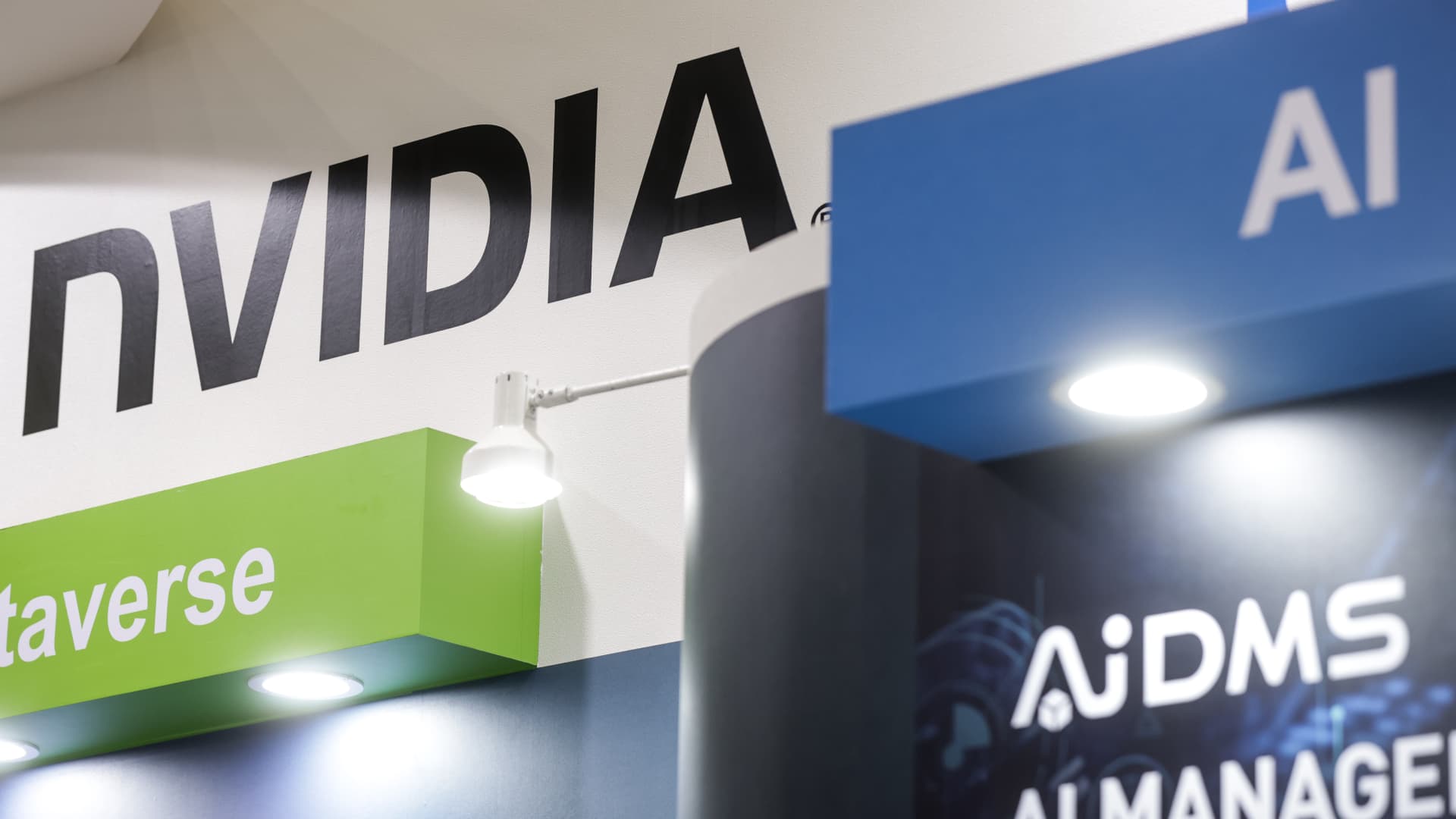Signage for Nvidia Corp. during the Taipei Computex expo in Taipei, Taiwan, on Tuesday, May 30, 2023.
Hwa Cheng | Bloomberg | Getty Images
This report is from today’s CNBC Daily Open, our new, international markets newsletter. CNBC Daily Open brings investors up to speed on everything they need to know, no matter where they are. Like what you see? You can subscribe here.
What you need to know today
The bottom line
Four months after hype over artificial intelligence fired up markets, the rally’s starting to look more like a hallucination — a confident but false claim AI models are prone to making.
For evidence, look no further than Nvidia, the spark that ignited the whole blaze. Shares of the chipmaker peaked on Aug. 24 and have tumbled 18.4% since. While it’s true Nvidia’s still up 181% for the entire year, that’s 60 percentage points lower than its August peak, when shares were 244% higher.
Microsoft’s announcement of a broad rollout of Copilot — the company’s AI tool — to corporate clients didn’t stoke excitement. On the contrary, Microsoft shares dipped 0.39% after the company’s event. By contrast, recall how share prices popped to a record in May after the company announced the pricing of the Copilot subscription service.
And Arm, which tried to position itself as integral to AI computing, saw its shares descend to Earth after rocketing on the first day of its initial public offering. After dropping almost 1% in extended trading, the share’s around $51.60 a piece — just 60 cents above its IPO price.
In short, investor interest in AI — while still hot in comparison with other sectors — looks like it’s simmering down.
“The combination of waning retail demand and cautious risk sentiment among institutional investors may pose a substantial risk to the AI sector, potentially heralding a pronounced reversal in the weeks ahead,” said Vanda Research’s senior vice president Marco Iachini.
Blame the usual suspects for this lukewarm sentiment. Higher-for-longer interest rates — and Treasury yields — caused by spiking oil prices and a tight labor market. (Initial jobless claims for last week dropped to their lowest level since late January, according to the U.S. Labor Department.)
Against that backdrop, it’s unsurprising major indexes had a bad day. The Dow Jones Industrial Average fell 1.08%, the Nasdaq Composite slid 1.82% and the S&P 500 lost 1.64%, the most in a day since March. All three indexes are poised for a losing week, with the tech-heavy Nasdaq the deepest in the red so far.
If it’s any comfort, September — the worst month for stocks, historically — ends in a week. Investors will hope it’ll pass like a bad dream, or a banished hallucination.

